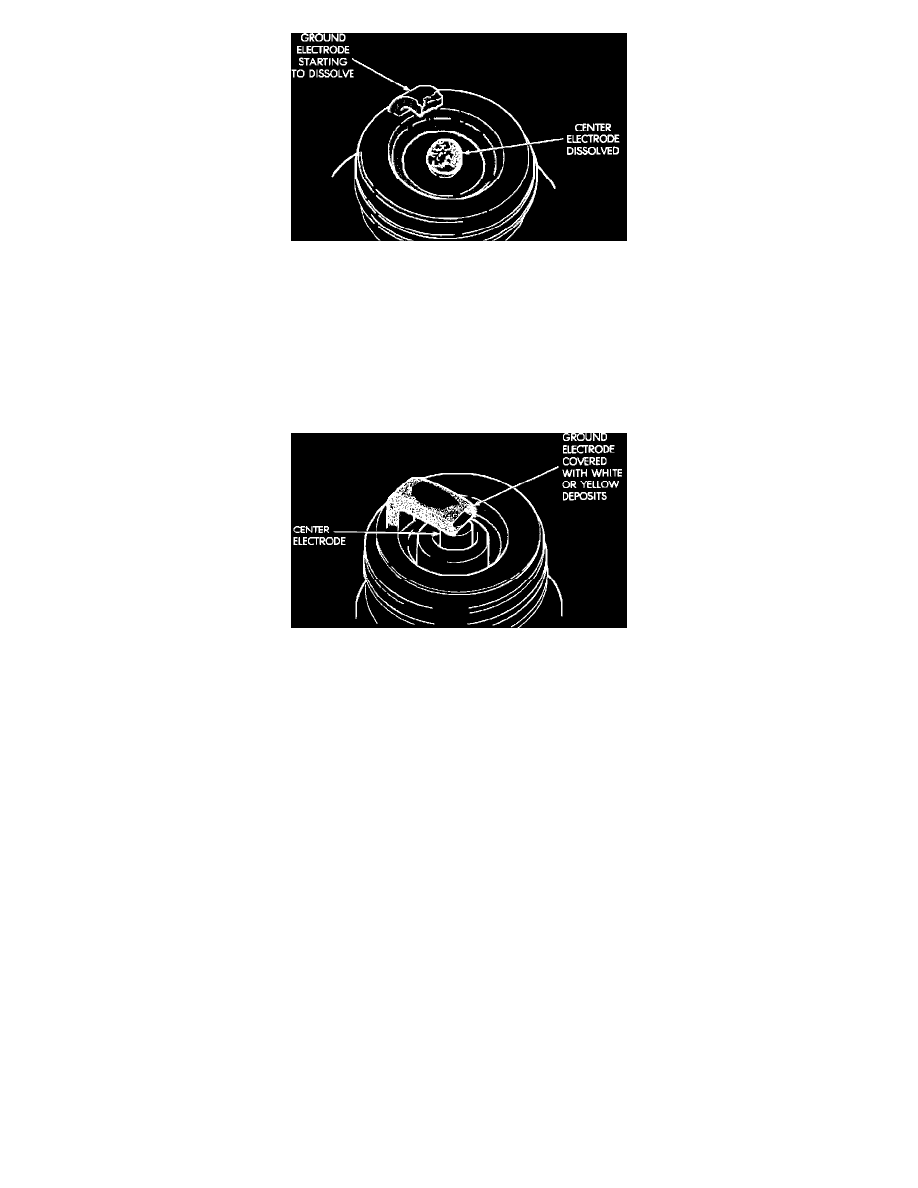RAM 3500 Truck 4WD V10-8.0L VIN W (1997)

Preignition Damage
Preignition damage is usually caused by excessive combustion chamber temperature. The center electrode dissolves first and the ground electrode
dissolves somewhat latter. Insulators appear relatively deposit free. Determine if the spark plug has the correct heat range rating for the engine.
Determine if ignition timing is over advanced, or if other operating conditions are causing engine overheating. (The heat range rating refers to the
operating temperature of a particular type spark plug. Spark plugs are designed to operate within specific temperature ranges. This depends upon the
thickness and length of the center electrodes porcelain insulator.)
Scavenger Deposits
Scavenger Deposits
Fuel scavenger deposits may be either white or yellow. They may appear to be harmful, but this is a normal condition caused by chemical additives in
certain fuels. These additives are designed to change the chemical nature of deposits and decrease spark plug misfire tendencies. Notice that
accumulation on the ground electrode and shell area may be heavy, but the deposits are easily removed. Spark plugs with scavenger deposits can be
considered normal in condition and can be cleaned using standard procedures.
Wet Fouling or Gas Fouling
A spark plug coated with excessive wet fuel or oil is wet fouled. In older engines, worn piston rings, leaking valve guide seals or excessive cylinder wear
can cause wet fouling. In new or recently overhauled engines, wet fouling may occur before break-in (normal oil control) is achieved. This condition can
usually be resolved by cleaning and reinstalling the fouled plugs.
